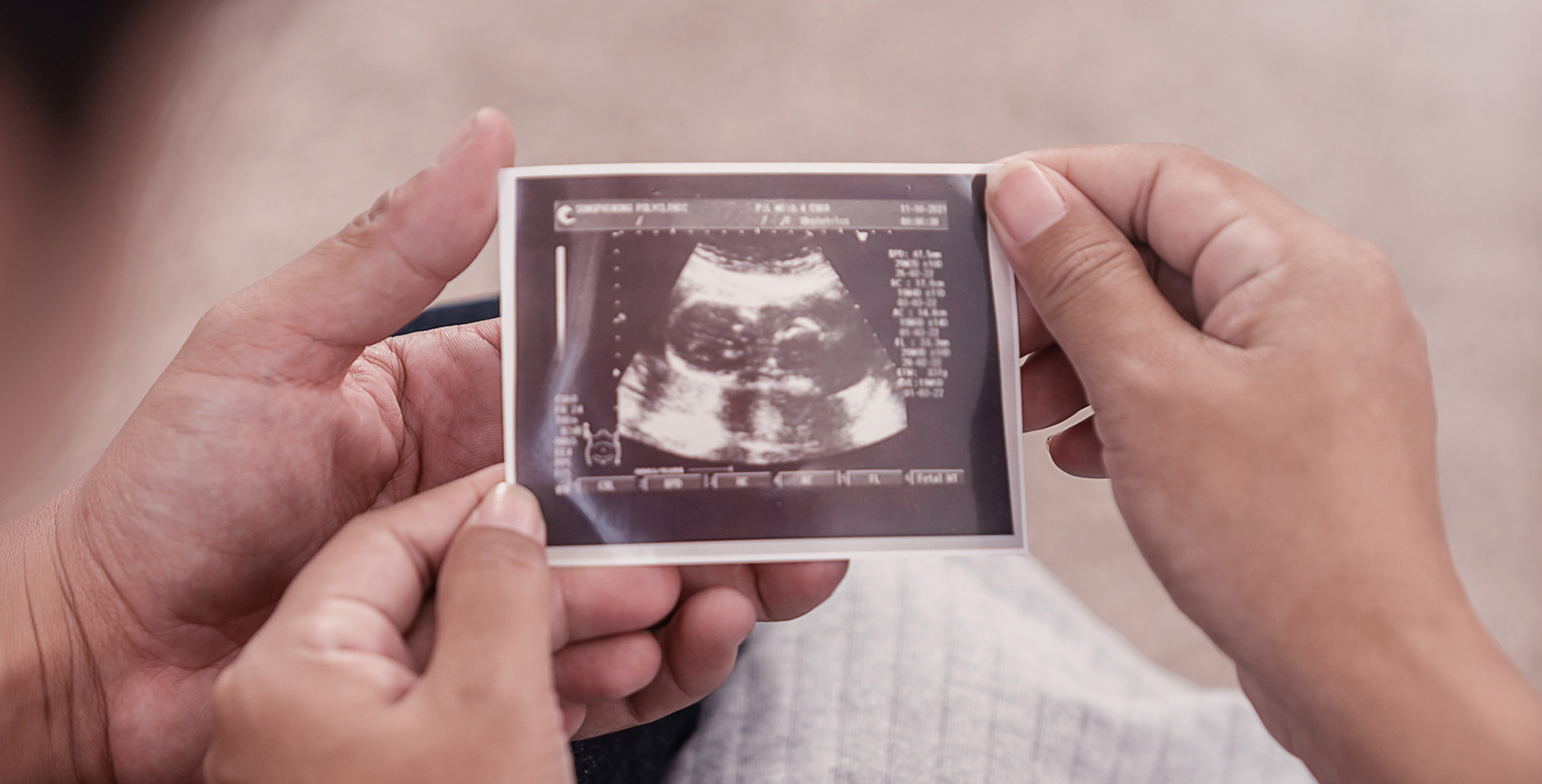Editor’s Note: Among many of the most pressing ethical issues of our day is deep confusion over what it means to be human. From questions over abortion and racism to technology and sexuality, human anthropology lies at the heart of contemporary cultural debate. In light of the ongoing sexual crisis seen throughout our society, certain realities that once seemed common sense to most are being challenged in what is a failed quest to define our own existence and live independent of God’s created order.
As part of the ongoing research efforts at the ERLC, the following article, as well as the corresponding piece, “What is a man?”, offer a detailed look at these central questions in light of theological anthropology and philosophy. Each article is followed by a response from the corresponding scholar in hopes to further robust dialogue on these important questions of “what is a man” and “what is a woman” rooted in truths that cut to the heart of the important ethical questions being posed today.
—
As many a man has discovered, most women don’t like being called “emotional.” The term is at once a dismissal and a putdown, an implication that she is melodramatic, irrational, or even unhinged. Ironically, men are equally as emotional as women; they just express their emotions differently. Despite cultural stereotypes, the presence or intensity of feeling does not exclusively belong to women. Nor does the presence or intensity of a feeling exclusively define women. A woman’s emotions are not the sum of her identity. She is more than her feelings.
Every person is more than his or her feelings. Personal identity is not determined or proven by our emotions or perceptions. Yet, when we attempt to determine or prove gender identity, that is precisely the measure our culture employs. To be woman, today, is a feeling.
And this feeling is an irrefutable proof, whether it corresponds to one’s biology, and whether it changes throughout one’s lifetime (or even one’s day).1Nancy Pearcey, Love Thy Body: Answering Hard Questions About Life and Sexuality (Grand Rapids: Baker Books, 2018), 203. Apart from one’s feeling, the medical community has no physiological, legal, medical, or physical criteria to verify a person’s gender identity.2Pearcey, Love Thy Body, 197. It is a self-reported, self-verified, and self-sustained identity. As Ryan T. Anderson describes in his work, When Harry Became Sally, the belief that a biological male can be “a woman stuck in a man’s body” presupposes that he knows what’s it’s like to be a woman, despite his male body, male brain, male reproductive capacities, and male DNA.3Ryan T. Anderson, When Harry Became Sally: Responding to the Transgender Movement (New York: Encounter Books, 2018),104. Even more, it also presupposes that he can separate his biological body from his gender identity.
In other words, the physical self becomes irrelevant to determine a person’s true self. For someone with gender dysphoria, one’s sense of gender is misaligned with one’s biology. The body is a hindrance to authentic self-expression. The condition causes intense psychological distress, often causing gender dysphoric persons to seek relief through social, hormonal, and surgical changes. These changes can be anything as transient as clothing and hairstyles, or as irreparable as cross-sex hormones and organ-removing procedures.
Recent data suggests gender confusion is affecting young women and girls at alarming and precipitous rates. Girls who identify as transgender have increased from 1/2,000 in 2008 to 1/20 in 2022.4“The Controversy Over Trans Teens,” The Week, October 24, 2021; accessed May 16, 2022; available from https://theweek.com/life/1006253/the-controversy-over-trans-teens. Irreversible Damage: The Transgender Craze Seducing Our Daughters, Abigail Shrier notes the phenomenon of gender dysphoria among teenage girls runs deeper than sudden identity confusion: “For these girls, trans identification offers freedom from anxiety’s relentless pursuit; it satisfies the deepest need for acceptance, the thrill of transgression, the seductive lilt of belonging.”5Abigail Shrier, Irreversible Damage: The Transgender Craze Seducing Our Daughters (Washington D.C.: Regenery Publishing, 2020),xxx.
An entire generation of women and girls is searching for an answer to the question: What is a woman? And in a secularized, hyper-individualistic culture like ours that elevates sexual and gender identity as our true selves, they have little more than feelings to guide them.6Carl R. Trueman, Strange New World: How Thinkers and Activists Redefined Identity and Sparked the Sexual Revolution (Wheaton: Crossway, 2022), 74. For a more detailed and academic treatment of Trueman’s research, see The Rise and Triumph of the Modern Self (Wheaton: Crossway, 2020). As gender dysphoria spreads at alarming and precipitous rates, some suggest that Christian compassion would compel us to support someone’s gender transition, even if as a temporary measure to give therapeutic relief.
The Bible and the body
In For the Body, Timothy Tennent claims the body is not just a biological category; it is also a theological category, one that reveals its Creator. “[T]he body makes the invisible mysteries of God’s nature and redemption manifest and visible as a tangible marker in the world.”7Timothy C. Tennent, For the Body (Grand Rapids: Zondervan Reflective, 2020), 14. Like all of God’s creation, the human body reflects design and purpose; every part has a function, every cell is complex.
Scripture portrays the body as good and essential to our identity (Gen. 1:26-29). If it were not both good and essential, the Lord would not have assumed a physical body (Heb. 2:13), nor would he have resurrected bodily (1 Cor. 15:3; Rev. 22:20), nor would he fulfill the redemption of his saints with a new, physical body (John 6:40; 1 Cor. 15:52; Rom. 8:23).8Tennent, For the Body, 25. “Our created bodies all point to Christ’s incarnation, and in turn, his resurrected body points to our physical, bodily (not just spiritual) resurrection at the end of time….If our bodies are untrustworthy and only serve to mask the true self that is within, then the incarnation of the second person of the Trinity as Jesus of Nazareth cannot be trusted as a reliable means for God’s most profound self-disclosure in history.” Our bodies are not accidental or incidental to our identity as those who are created in God’s image.
How does our biological sex relate to our gender identity? The Creation narrative gives us a clue. Genesis 1-2 tells, then re-tells, how God created humanity. Chapter 1 describes humanity in relationship to the rest of God’s creation. God made mankind—the culmination of his creative work—in his image (Gen. 1:26-29). It describes the first human beings as a male (zakar) and female (nequeba).9Tennent, For the Body, 19. Tennent also notes the entire Creation narrative is a series of binaries. “The entire creation account is set up around divinely instituted binaries. The dominant pairs or binaries in the account are ‘light and darkness’ (or ‘day and night’), ‘earth and sky,’ ‘water and land,’ ‘sun and moon,’ and ‘male and female.’” (19). This refers to the sexual difference between male and female. It also demonstrates that biological sex is binary.10This claim also considers the reality of intersex persons. Intersex refers to a biological state in which a person possesses both male and female reproductive organs at birth. The condition is the result of a chromosomal irregularity in utero. Estimations of the intersex population vary; one source claims it is as high as 1.7%, but a later study found a more precise definition of intersex conditions to be much lower. See Preston Sprinkle, Embodied: Transgender Identities, the Church, and What the Bible Has to Say (David C. Cook, 2021), 117-120. As with all persons born with genetic irregularities, intersex persons deserve compassion and care. However, it is in error to conclude that congenital reproductive abnormalities disprove that sex is binary. See Deborah Soh, “Myth #1: Biological Sex is a Spectrum,” in The End of Gender: Debunking the Myths About Sex and Identity in Our Society (New York: Threshold Editions, 2020). Chapter 2 describes humanity in relationship to each other, what today we would call gender identity. Instead of finding male (zakar) and female (nequeba), we find man (ish) and woman (ishah).11“Researchers identify 6,500 genes that are expressed differently in men and woman,” Weizmann Institute of Science, March 5, 2017, https://www.sciencedaily.com/releases/2017/05/170504104342.htm. The Weizmann Institute of Science in Israel reported over 6,500 genes that are expressed differently in men and women, many of which are entirely separate from sexual reproduction such as the skin and the left ventricle of the heart. The male and the female relate to one another as a man and a woman, respectively.
Here we find God’s original intent for sex and gender. In both Genesis 1 and 2, the sets of terms correspond. If a human being is a male (zakar), then God created him a man (ish). If a human being is a female (nequeba), then God created her as woman (ishah). Our biological sex indicates and informs gender identity.
Prenatal development confirms this. The male and female are comprehensive and complex. At the cellular level, there are only two biological types of reproductive cells: male and female.“12Biological sex is either male or female. Contrary to what is commonly believed, sex is defined not by chromosomes or our genitals or hormonal profiles, but by gametes, which are mature reproductive cells. There are only two types of gametes: small ones called sperm that are produced by males, and large ones called eggs that are produced by females. There are no intermediate types of gametes between egg and sperm cells. Sex is therefore binary. It is not a spectrum.” (Soh, 16-17) The first evidence of sex differentiation occurs in utero, during the eighth week of gestation. At eight weeks, a male baby experiences a flood of testosterone, which shapes his brain development.13Louann Brizendine, The Female Brain New York: Harmony Books, 2007), 15. The absence of testosterone for a female baby shapes her brain development as well. The centers of her brain that control communication, observation, and processing of emotion are larger. Female infants are born hardwired for emotional connection.
In a female baby’s first three months, she will increase in eye contact and “mutual facial gazing” by 400%.14Brizendine, The Female Brain, 37-38. As her brain develops,15Debra Soh, The End of Gender, Chapter 2 “Myth #2: Gender is a Social Construct.” Soh debunks research that undermines assertions of male/female brain differences (41). she will process facial features more quickly and have greater sensitivity to social experiences involving faces and emotions.”16Stephen A. Furlich, Sex Talk: How Biological Sex Influences Gender Communication Differences Throughout Life’s Stages (Chatham, NJ: Bowker, 2021), Kindle Location: 811. Her brain also has larger limbic systems, affecting language, relationships, and memory,17Furlich, Sex Talk, Kindle Location: 784. as well as bonding, nesting, and one’s connection to one’s emotions.18Richard Lippa, Gender, Nature, and Nurture, 2nd ed. (Mahway, NJ and London: Lawrence Erlbaum, 2005), 100-102, cites many of these studies; Simon Baron-Cohen, The Essential Difference: Men, Women and the Extreme Male Brain (London: Penguin Books, 2003), devotes an entire book to the thesis: “The female brain is predominantly hard-wired for empathy. The male-brain is predominantly hard-wired for understanding and building systems” (5). The corpus callosum is also larger in the female brain, which facilitates transfer of information between the left and right hemispheres. The two areas of the frontal and temporal lobes that are associated with language are significantly larger in women than in men. All of this occurs before she can be imprinted by gendered social norms.19Sex differences in brain anatomy,” National institute of Health July 28, 2020, accessed May 24, 2022; available from https://www.nih.gov/news-events/nih-research-matters/sex-differences-brain-anatomy. “On average, males and females showed greater volume in different areas of the cortex, the outer brain layer that controls thinking and voluntary movements. Females had greater volume in the prefrontal cortex, orbitofrontal cortex, superior temporal cortex, lateral parietal cortex, and insula. Males, on average, had greater volume in the ventral temporal and occipital regions. Each of these regions is responsible for processing different types of information.”
The brain and the body
These neurobiological differences guide gender behavior. Baby girls prefer to look at faces (i.e., people), while baby boys prefer to look at mechanical mobiles (i.e., motion). As young as 9 months old, boys and girls will gravitate toward gender-typical toys (girls to dolls and boys to cars, for example). As Dr. Debra Soh notes, this age is before children are old enough to recognize gender as a concept, which usually occurs between 18 and 24 months.20Soh, The End of Gender, 255
Expressions of gender differences will vary from culture to culture; what is considered masculine or feminine in a given society or era will be different from another. But, whether a child gravitates toward, and identifies with, traits that are masculine or feminine within his or her own culture is “driven by biology.”21Soh, The End of Gender, 43. The biological differences in the brain lead to differences in behavior.22Soh, The End of Gender, 41. “Social markers for gender may change as decades go by, but this doesn’t mean children are socialized into having a gender….This doesn’t disprove that gender is biological, only that the expression of gender changes depending on what is considered male- and female-typical.” (Soh, 255) This doesn’t negate individuality or people whose interests aren’t gender-typical. And it doesn’t mean women have to conform to culturally contrived stereotypes.23Sprinkle, Embodied, 152. “Men aren’t commanded to be masculine, and women aren’t commanded to be feminine. They’re both just commanded to be godly.” Nancy Pearcey summarizes this well: “We must take care not to add to Scripture by baptizing gender expectations that are in reality historically contingent and arbitrary. . . . The church should be the first place where young people can find freedom from unbiblical stereotypes – the freedom to work out what it means to be created in God’s image as wholistic and redeemed people.”24Pearcey, Love Thy Body 218. These patterns do show, however, that God’s created our physical selves and our relational selves to be a unified whole.25Walker, God and the Transgender Debate, 54, cf. 50-51. Andrew Walker elaborates: “Maleness isn’t only anatomy but anatomy shows that there is maleness. And femaleness isn’t only anatomy, but anatomy shows that there is femaleness. Men and women are more than just their anatomy, but they are not less. Our anatomy tells us what gender we are.” So, we can plainly state:
A woman is a biologically female human being
But, what if the physical body and the inner sense of gender don’t align? Which one determines who we are? Preston Sprinkle gives guidance in his book, Embodied, when he says our biological sex “determines who we are . . . and our embodiment is an essential part of how we image God in the world.”26Sprinkle, Embodied, 152. Our created, embodied selves tell us who we are. Who we are is not determined on how we feel. The pain of gender dysphoria is real. Longing for inner wholeness is real. But the promise of peace27Littman conducted a study to explain the phenomena of an increasing and sudden prevalence of gender dysphoria among adolescents, teenagers who had previously expressed no gender dysphoric symptoms. The condition, known as “Rapid Onset Gender Dysphoria,” (ROGD) revealed an unexpected – and culturally unwelcome – pattern. Littman found the influence of an adolescent’s relationships directly affected her gender identity. Among adolescents with ROGD, 87% had friends who announced themselves as gender dysphoric, had saturated themselves with material on niche websites discussing gender dysphoria, or both. In other words, a condition believed to find its source and validation in one’s intrinsic sense of self has extrinsic factors. Lisa Littman, “Parent reports of adolescents and young adults perceived to show signs of a rapid onset of gender dysphoria,” PLOS ONE Vol 13, No. 8; August 16, 2018, accessed September 1, 2020; available from https://journals.plos.org/plosone/article?id=10.1371/journal.pone.0202330; internet. through hormone treatments and surgical procedures is an illusion.28Jennifer Smith, “Lesley Stahl Defends CBS 60 Minutes Episode About Transgender People Rushing into Treatment Then Regretting It: Young Man Was Castrated After Taking Female Hormones For Just THREE MONTHS,” DailyMail.com, May 26, 2021; accessed May 16, 2022; available from https://www.dailymail.co.uk/news/article-9621959/Lesley-Stahl-defends-CBS-60-Minutes-episode-transgender-teens-rushed-it.html. Because the purpose for our sex and gender—the purpose for which we were made—will never be discovered from knowing ourselves, but in knowing the God who made us for himself.29This statement is not intended to dismiss the real and complex challenges of gender dysphoric persons. It is rather to offer hope that being reconciled to Christ is the way to inner peace.
A response to “What is a woman?” from Gregg R. Allison
At the outset, I express my thanks to Katie for tackling this important topic with me. I expect that she will agree that writing this essay was one of the more difficult tasks I have/she has ever undertaken!
Among the many areas that I appreciate about Katie’s essay, I concentrate on four. First, she appropriately challenges the contemporary move that splits sex from gender. As she highlights, this shift overlooks or dismisses biological facts and elevates personal feelings or imagination, possibly leading to the claim that an XY individual is a woman or an XX individual is a man. Katie has assessed the current situation well: gender “is a self-reported, self-verified, and self-sustained identity,” and it carries the day.
Second, from her vantage point of being a woman, Katie rightly defies a transgender woman’s assertion that he knows what it means to be a woman. I concur. No man can possibly know what it is to be a woman because he cannot experience typical female lived experiences such as estrogen-onset puberty, menstruation, the miracle of pregnancy, the bonding between mother and nursing child, pervasive domination by men, mistreatment and being demeaned by men, the fellowship of sisterhood, and more.
Third, Katie compassionately laments the nightmarish experience of gender incongruence, which is increasing at an alarming rate. As she underscores, “the pain of gender dysphoria is real,” and her intent in discussing it is not “to dismiss the real and complex challenges of gender dysphoric persons.”
Fourth, Katie strongly affirms the goodness of human embodiment and its essential role in human identity. This is a much-needed corrective to the Gnostic and neo-Gnostic deviations that are rearing their ugly heads in some contemporary societies. I wonder if she would affirm, as I do, “I am my body.”
This leads to my next section.
Of the many questions I have, I offer two broad areas for further exploration. First, I would like to see more discussion of Katie’s point—interacting with Debra Soh—that masculine and feminine traits within different cultures are “driven by biology.”30Soh, The End of Gender, 41. How does this affirmation escape the error of biological essentialism or determinism? On the “nature vs. nurture” spectrum, Katie leans toward the “nature” side, as she explains that “biological differences in the brain lead to differences in behavior.” From my perspective, the “nurture” side often gets minimized in these discussions, and I would like to hear more from her on this point.
Second, I would appreciate Katie expanding on her minimal definition—“a woman is a biologically female human being”—and address how a woman expresses her female biology beyond, for example, facial gazing, language, memory, and transfer of information from right and left brain hemispheres. I would like to hear her discuss how a woman expresses emotions, bonding, nesting, and relationships, specifically, (1) how cultural/contextual factors incise themselves into this biological substratum, thereby affecting its expression, and (2) how these female expressions (for example, of bonding) are not completely unique to a woman yet differ from those of a man. This topic is fascinating, difficult, and often frustrating, and I’d enjoy hearing more of her thoughts.
Read “What is a man?” by Gregg R. Allison










